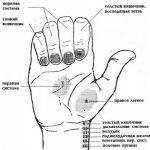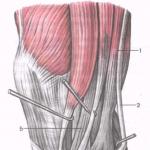The use of oxytocin during childbirth in women. What is oxytocin and when it is especially needed
In modern obstetric practice, there are cases when labor activity requires a thorough correction by medical professionals. If, by all indications, the time for the birth of a baby has already come, but those delivery processes, which usually start naturally, are still completely inactive or significantly slowed down, doctors have to use the artificially produced hormone oxytocin to stimulate labor.
It was synthesized in the 50s of the last century. And for the time being was considered to be a completely safe drug, reinforcing uterine contractions, facilitating the process of resolving the burden. But for more than half a century, some side effects of oxytocin have been discovered and studied. Their very presence puts the drug at risk to health. What should be the main reason for prescribing oxytocin to women in labor only in the most extreme cases.
In small quantities, oxytocin is constantly present in the body of a woman. He is involved in the synthesis of happiness hormones (endorphin) and stress (cortisol). Affects the formation of attachment and emotional memory.
Shortly before giving birth, the concentration of oxytocin in the blood of the expectant mother increases sharply. And there is an explanation. This hormone prepares a woman for the birth of a child, not only physically, but also psychologically.

Oxytocin - a hormone that is produced by the brain and controls the strength and frequency of labor in labor
During and after childbirth, oxytocin:
- stimulates uterine contraction;
- accelerates the onset of contractions;
- controls their strength and frequency;
- dulls pain in childbirth;
- increases the overall resistance of the mother's body;
- improves mood, prevents panic, relieves stress;
- contributes to the discharge of the placenta;
- helps the uterus to return to its former size after childbirth;
- prepares breasts for the upcoming lactation;
- activates the secretion of prolactin, responsible for the production of breast milk;
- stimulates the delivery of breast milk from the mammary glands to the ducts;
- contributes to the overall recovery of the body of the woman after delivery.
It is precisely oxytocin, as it were, that conducts the generic process, controlling that all organs perform their functions in harmonious cooperation with each other. And after the baby is born, he is also responsible for the establishment of lactation, the recovery of the woman in the postpartum period and for the emergence of that special spiritual and physiological connection between the mother and her child.

Synthetic analogue of the hormone causes a spasm of the uterus vessels, making the contractions become too strong and extremely painful.
But this is all about oxytocin, produced naturally. The synthetic analogue of this hormone, as the obstetric-pediatric practice of the last decades has proved, instead of performing the functions of a natural hormone, on the contrary, turns the natural, albeit sluggish, generic process into an obviously pathological one. Entailing a lot of complications for both mother and child.
Oxytocin, artificially synthesized, uterine contractions does activate, but its mechanism of action is somewhat different. It rather sharply causes a strong spasm of the uterine vessels. What makes the contractions excessively intense and very painful.
The strength of the contractions and pain are directly dependent on the dose of the hormone administered to the woman, which is often very difficult to determine, since different women react to its administration differently. This automatically translates oxytocin-stimulated genera into extreme categories.
Oxytocin hardly penetrates the fetus’s blood through the placenta. But spasm of the uterus vessels and rapid delivery lead to oxygen starvation of the fetus, birth trauma and developmental delays in the future.
Fully replace the natural hormone with its synthetic analogue can not. In addition, he, as has been proven in practice, causes significant damage to the health of the woman and the fetus.
That is why it is worth using it to stimulate labor activity only in the most exceptional cases when a fast delivery is medically necessary, and delay can cost the life of a mother or child.
When is its use necessary?

Stimulation of labor is permitted only in the most extreme cases.
Conditions in which the use of oxytocin is justified:
- Severe preeclampsia.
- Long anhydrous period.
- Rhesus conflict.
- Complete cessation or weakening of labor contractions.
- Severe bleeding in the postpartum period.
- Weak uterine contraction after delivery.
- During cesarean section, for the subsequent reduction of the uterus.
Stimulation with oxytocin, according to WHO (World Health Organization), requires only 10% of laboring women. But doctors resort to it much more often. And such actions can be considered criminal.
First of all, physicians are required to try all available natural methods of activating labor activity (squats, walking, irritation of the nipples, etc.), and only in cases of extreme necessity to decide on the introduction of oxytocin.

Already after 5 minutes after drug administration, labor activity significantly increased.
Contraindications
- The strong sensitivity of the woman to oxytocin.
- Pathology, immaturity, the threat of rupture of the cervix.
- Uterine fibroids, scars on her neck.
- Hydrocephalus in the fetus.
- Large fruit.
- The discrepancy between the size of the fetus and the pelvis of the mother.
- Malposition.
- Placenta previa or umbilical cord.
- Multiple pregnancy.
Oxytocin can not be used to stimulate labor, if the cervix is not ready for childbirth. Or amniotic fluid has not yet poured.
In such cases, first conduct activities that contribute to the shortening, softening, opening of the cervix, and amniotomy (opening the membranes of the fetal bladder). Only then enter the woman's hormone.

If delivery occurs by oxytocin stimulation, it is necessary to carefully monitor the condition of the fetus.
Special features
- Oxytocin is administered only intravenously or intramuscularly.
- After the hormone enters the blood of the woman, the increase in uterine contractility is observed within 5 minutes.
- Doppler and cardiotocographic monitoring of the state of the fetus during the induction of labor with oxytocin is mandatory. The hormone causes more prolonged and frequent contractions. And for a child it is fraught with oxygen starvation.
- The dosage of the drug is selected individually. To start labor, a large dose of hormone is used. When permanent and fairly strong contractions are established, the dose of oxytocin can be reduced to maintenance.
- With a sharp deterioration of the condition of the fetus or when the stimulation of labor is not effective enough, for a successful delivery, the expectant mother is invited to resort to emergency cesarean section.

The most common effects of hormonal stimulation of labor are various CNS disorders in newborns and birth injuries
Effects
Until recently, the effect of synthetic oxytocin on the body of the mother and her baby has not been fully studied. Therefore, it was believed that it is relatively safe.
But now, given the numerous studies of truly practitioners in the field of obstetrics and pediatrics, it can be argued with certainty that stimulation of labor by oxytocin is certainly very harmful both to the health of the woman and to the future full development of her child.
After oxytocin stimulation, the process of postpartum recovery takes much longer for the woman. And the child, due to spasm of the uterus vessels and an unnatural increase in the strength of contractions suffers even more.
In "oxytocin" children, there are frequent cases of inhibition in the work of the pulmonary and central nervous systems. These are consequences of fetal hypoxia. And due to the acceleration of childbirth, very often the kids get serious injuries when passing through the birth canal.

Oxytocin in humans is produced when he is happy
How to stimulate the production of its own hormone?
In its natural form, oxytocin is produced by the brain and in a certain concentration is present both in the female and in the male body. It is also called the hormone of love, tenderness and affection.
The release of oxytocin in the blood occurs when a person is kissed and hugged. When he is pacified, calm, loved and pleased with everything. The highest amount of this hormone is fixed, usually at night, when the body is resting. And for women - during orgasm.
There are studies on the effect of oxytocin in childbirth on the blood flow of the fetus. The main conclusion I will write off from the article about this study. "In women with primary weakness of labor activity, which required correction with oxytocin, there is a violation of perfusion (fetal blood - note of the author) of the fetal brain." It is important that the depth of the disorder depends on the dose of oxytocin injected: the higher the dose, the stronger the severity of the fetal cerebral blood flow disorder.
How oxytocin affects the uterus
This is a piece of Wikipedia article with my comments:
"Oxytocin has a stimulating effect on the smooth muscles of the uterus, increases the contractile activity and, to a lesser extent, the tone of the myometrium.
In low concentrations, oxytocin increases the frequency and amplitude of contractions of the uterus, and in high concentrations increases the tone of the uterus, increases its frequency and its contractions (up to tetanic contractions). Excretion of oxytocin during breastfeeding produces moderate, but often painful contractions during the first weeks of lactation. "
Comment: This is a physiological mechanism for reducing the placental site, which is in its physiology a wound surface.
When the frequency and amplitude of the contraction increase, there is not enough time for the uterus to relax and rest. During relaxation, the placental area is filled with blood, which is a necessary component of gas exchange between the blood of the mother and the child. Consequently, when there is no time gap between contractions, the fetal blood that consumed oxygen does not have time to come fully to the mother’s blood and receive the necessary oxygenation. Thus, the fetus is constantly experiencing hypoxia of varying severity. Hypoxia is a lack of oxygen to the tissues and organs of the fetus.
You need to know that oxytocin doses most often have an INDIVIDUAL effect. Accordingly, if for one woman the dose turns out to be medium or even small, for another woman this dose may turn out to be high.
"The effect of oxytocin on human sexual behavior has not been elucidated. At least two studies have found an increase in oxytocin lymph during orgasm, both in man and woman.
Oxytocin causes a feeling of satisfaction, reducing anxiety and a sense of calm next to a partner. Many studies have proven the connection of oxytocin in human relationships, increasing trust and reducing fear. This suggested that oxytocin might affect areas of the brain responsible for behavior, fear, and anxiety. "
Comment: I wrote about the effect on the sexual behavior of the hormone because I want to show once again how powerful and influential the drug is. ”
Side effects of the annotation to the drug
Have women in labor:
- On the part of the reproductive system: large doses or hypersensitivity to the drug can cause hypertension, cramps, tetany and rupture of the uterus, increased bleeding in the postpartum period. Sometimes a pelvic hematoma is possible. You can achieve a reduction in the risk of bleeding in the postpartum period by systematically monitoring the flow of labor.
- Since the cardiovascular system: the use of large doses of oxytocin can cause arrhythmia, premature ventricular contractions, arterial hypertension following arterial hypotension, reflex tachycardia, bradycardia.
- On the part of the digestive system: nausea, vomiting.
- From the side of water-electrolyte metabolism: due to the antidiuretic effect of oxytocin, with its rapid intravenous administration (more than 40 drops / min), along with a large amount of fluid, severe overhydration is possible. A state of severe overhydration with convulsions and coma can also develop with slow, more than 24-hour infusion of oxytocin.
- On the part of the immune system: anaphylactic reactions associated with dyspnea, hypotension or shock; anaphylaxis and other allergic reactions; occasionally fatal.
- From the nervous system: headache.
- From the skin: rash on the skin.
- In a fetus or newborn: a low number of Apgar scores on detection 5 minutes after birth, jaundice of newborns, retinal hemorrhage in newborns.
- Sinus bradycardia, tachycardia, premature ventricular contractions and other arrhythmias, residual damage to the central nervous system and brain, death of the fetus due to asphyxiation, as a result - increased activity of the uterus.
There are no comments needed.
Overdose and treatment
Symptoms overdose depends mainly on the degree of sensitivity of the uterus to oxytocin and is not associated with the presence of hypersensitivity to the active component of the drug. Hyperstimulation can lead to severe (hypertensive) and prolonged (tetanic) contractions or rapid delivery, and can also cause rupture of the body or cervix, vagina, postpartum hemorrhage, uteroplacental hypoperfusion, slowing of fetal cardiac activity, hypoxia, hypercapnia and death of the fetus.
Prolonged use of the drug in large doses (40-50 ml / min) may be accompanied by a severe side effect — hyperhydration (the situation is reverse to dehydration — the author's note), which is due to the antidiuretic effect of oxytocin.
Treatmentconsists in stopping the infusion of oxytocin, limiting fluid intake, using diuretics, intravenous administration of hypertonic saline, correcting electrolyte balance, relieving seizures with barbiturates, and providing professional care for a patient who is in a coma.
Conclusion
I talked with obstetricians who have experience with the constant use of oxytocin in labor. The conclusions they make are:
- It is possible and necessary to use oxytocin only according to strict indications. Only when the benefits of oxytocin are much greater than the harm.
- Always take into account the fact that the use of oxytocin causes a decrease in blood flow to the fetal brain. If the fetus has already begun to experience hypoxia, then the use of oxytocin should be very short-lived.
- The dosage of oxytocin should be selected individually, literally titration method. Dose - effect. All people have different sensitivity to oxytocin.
Now about what problems I often observe in children born as a result of childbirth using oxytocin. The severity depends on the dose and time of use. I was not looking for confirmation in the research. However, having a great experience in working with children from the moment of birth to adolescence, I can draw my own conclusions:
- A child is experiencing difficulty experiencing stressful situations of various origins. Since the contractions expelling him from the uterus were stronger than nature intended, any subsequent stress causes him fear and unwillingness to cope with him at all. A child (and an adult) begins to get hysterical, sick, run away from home, hide, or skip school. He escapes from stress in any way, just to not enter into it.
- A small child has problems with the correct interaction of different types of the peripheral nervous system: the sympathetic and parasympathetic. This leads, for example, to the discovery of peristalsis - colic. This leads to disorders of the vascular tone - the marbling of the skin will be a marker. I want to note that with marbling of the skin, the same violations can occur in the internal organs, which leads to a violation of the function of the organ.
- Hypoxia, which the child (fetus) will experience throughout the entire period of use of oxytocin, does not have specific “oxytocin” markers, looks like manifestations of acute hypoxia. But since hypoxia is most severely manifested by problems of the nervous system, the early effects of “oxytocin” labor will be hypoxic and hemorrhagic lesions of the central nervous system. In other words, hemorrhages in the tissue of the nervous system are possible. In second place will be lesions of the respiratory system, because it is the most volatile system in the process of childbirth, which should change very quickly after birth. Hypoxia can cause impaired blood flow in the lungs, which can cause problems in the formation of respiration of the newborn. And respiratory disorders after birth will be the basis for the continuation of hypoxia, which began in the process of birth.
Hypoxia can also cause impaired renal function and impaired function of the gastrointestinal tract.
I can not say that children who underwent hypoxia during childbirth are more susceptible to infection with viruses and bacteria than babies born without problems.
It should be noted that hypoxia due to the effect of oxytocin on the blood supply to the organs of the fetus can be enhanced by fetal hypoxia due to other causes.
I will list the long-term effects of oxytocin in childbirth, which we can see in older children:
- Increased neuro-reflex excitability
- Muscle hypertension
- Muscular dystonia
- Intracranial hypertension
- Minimal brain dysfunction, including attention deficit and speech problems.
Probably, in conclusion, I can ask obstetricians for conscious and competent use of oxytocin. And I want to avoid the routine use of oxytocin.
Let's respect the future of our children!
The hormone oxytocin is not yet fully understood.
Nevertheless, its relationship and a huge impact on the psycho-emotional sphere of a person has been confirmed.
In addition to affecting emotions, it plays a key role in the process of delivery - when oxytocin hormone is produced in insufficient concentrations, there is a weakness in labor due to weak contractions of the uterus.
“Amazing tool. It appeared relatively recently, but has already become popular with many experts. The reason is simple - monastic tea really helps fight thyroid diseases and other hormonal disorders. After I began recommending it to my patients, the dynamics of recovery improved by almost 80%. None of the other herbal remedies are capable of such. "
Buying monastic tea from the thyroid gland on this site, you completely protect yourself from fakes!
The hormone is considered necessary exclusively for the female body, since without it there is no contraction of the uterus muscles, but the production of oxytocin occurs in the male body.
The question arises - what is it, oxytocin, why is it called the "attachment hormone" and why should it be produced in men, not just women?
Oxytocin - It is a biologically active enzyme produced in the hypothalamus, one of the segments of the brain responsible for the performance of the endocrine system in general and the sex glands in particular.
After the hormone has been produced, it is transferred to the pituitary gland, from which it directly enters the blood.
Through the bloodstream, the enzyme is distributed throughout the body and is able to fulfill its own purpose.
Oxytocin, a love hormone, can be characterized as follows, briefly listing all its main features:
- "Hormone of happiness" from a chemical point of view is nonapeptide - a substance of protein nature, which consists of 9 amino acids.
- On the biological side, it refers to neuropeptides - The functions of oxytocin lie not only in the hormonal sphere of the body, but it also acts as a brain neurotransmitter.
- Russian name of the hormone - oxytocin.
- The accepted international name is oxytocin.
- The Latin name sounds a little different - oxytocinum, substances of the oxytocini group.
- The oxytocin gross formula of a substance has the following form: C 43 H 66 N 12 O 12 S 2.
- From a pharmacological point of view, a substance refers to such groups: hormones of the pituitary, hypothalamus, gonadotropins, gonadotropin antagonists. Oxytocin is a uterotonic drug.
The female body needs oxytocin more than the male body. It not only ensures the possibility of delivery itself, but also is responsible for the possibility of stopping postpartum hemorrhage.
When its concentrations are too low, for a woman in the early postpartum period and after some surgical interventions in the uterus, there is a high probability of death due to massive blood loss.
Interesting!
A neurotransmitter is a substance that is a mediator that transmits impulses, both between cells of the nervous system and from cells of the nervous system to executing cells.
Hormone production
Scientists have recorded the dependence of the intensity of hormone production on external factors of the psycho-emotional sphere of a person.
There was an "explosion" of its development, when a dear person touched a person. In addition, according to studies, the following factors and effects on the patient can increase the level of blood oxytocin:
- Games with children.
- Any contact with your loved one.
- Joint pastime with a pleasant companion.

Negative factors that can affect the amount of hormone contained in the blood and reduce its production are mainly represented stressogenic situations.
In addition, reduce the concentration of the enzyme in the blood and its synthesis of beverages containing in its composition ethyl alcohol.
Concentration
Oxytocin is contained in the body in approximately the same concentrations throughout the entire period of life. However, there are some minor daily fluctuations in its quantity.
The emotional background of a person depends on the ratios of certain hormones.
It is believed that oxytocin causes love.
Interesting!
It has also been proven that high concentrations of the described hormone increase a man’s desire to start a family and become a guarantor of loyalty to one sexual partner.
The highest rate of this enzyme accounts for night time. Similarly, it explains the fact that most training and true contractions during pregnancy occur precisely at night.
Impact mechanism
The hormone affects the functions of many body systems, ensuring their performance at the level required at a particular time. His most notable duties are the following:
- Provokes smooth muscle contractile activity - takes participation in labor and processes of the gastrointestinal tract.
- Together with prolactin leads the formation of milk and colostrum in the glands.
- Provides the formation of emotional dependence on a particular sexual partner.
- Increased hormone production levels contribute to gaining man of peace of mind.
- Prolongs youthful muscle fibers of the body and speeds up regenerative abilities of the body.
Sexual attraction, love and trust - not the only psycho-emotional nuances, the formation of which affects the enzyme.
Psycho-emotional component of the hormone
Oxytocin is supplied to the bloodstream and causes classical reactions of the body. However, it is also supplied to some parts of the brain, where its action is represented by the following effects:
- Affects on the emotional component of a person from the positive side.
- Provides psychological stability.
- Participates in cognitive functions - memorization, speech, intellect and others.
- Regulates high mental order determines the social behavior of a person.
In addition to these effects, it is determined that oxytocin concentrations are responsible for the openness of the person and increase the degree of altruism.

However, it also leads to some negative manifestations, for example, a person becomes ready to do a lot for the good of dear people, without any doubts about the correctness of his own act.
Negative effects
From a physiological point of view, excessive oxytocin concentrations can be quite dangerous.
During gestation, excessive hormone production can drive to spontaneous abortions and run the process of delivery before the necessary, provoking preterm delivery.
In rare situations, it can become the cause fluid retention in the body and lead to violations of water-salt balance, reducing the rate of blood potassium.
Excessive concentrations of oxytocin have a conflicting effect on the ability to memorize. Learning and memory are down, however, this is attributed to the protective mechanisms of the body so that the woman in labor does not remember the pain of childbirth.
But social interactions and everything that can have a direct connection with them, on the contrary, is stored in memory extremely firmly.
Since oxytocin is responsible for affection, then during the separation of a couple in which one of the partners has a strong attachment to the other, heartache is experienced. Such a manifestation is also an effect of the hormone.

Synthetic oxytocin
Like many other compounds that are produced by the body, we managed to create oxytocin by artificial means and make drugs based on synthetic oxytocin.
Interesting!
Previously, before the removal of the oxytocin formula, the substance was also used in pharmacology. However, a natural equivalent was used, the source of which was cattle.
The most common use of artificial hormone is to stimulate labor, in the event of insolvency or the need for premature delivery.
It is also used to speed up the rehabilitation period after a cesarean section.
However, the synthesized oxytocin can cause harm to the body, since a long period of its use can suppress the production of a natural substance.
Use of synthetic oxytocin
Enters the body by intravenous or intramuscular administration. In rare cases, it is administered subcutaneously.
The injection method is due to the fact that it quickly collapses under the influence of gastric juice and is not able to have an effect of the required intensity.
It is used for gynecological purposes, as it can effectively stop the bleeding, eliminate the primary and secondary weakness of labor activity.
However, its use is possible only in the hospital environment under constant monitoring of the condition of the woman and the fetus (during pregnancy).
Observation of the condition consists in fixing the frequency of uterine contractions and the frequency of the heartbeat of the fetus.
Direct medical indications are a necessity due to the following points:
- Excessive injected dose of the drug can lead to rupture of the smooth muscles of the uterus due to overvoltage, especially in the presence of scars on it.
- If it is impossible to open the cervix and other direct indications for cesarean section.
- In situations where excessively active labor can cause harm to the health of the fetus, for example - entanglement with the umbilical cord.
At the request of the woman in labor, the drug is not administered, as it is capable of causing a number of negative physiological reactions and has contraindications, which neglect exposes the life of a woman and a child to unreasonable danger.
Ask the expert in the comments
The hormone that is created in the brain is called oxytocin: namely, in the hypothalamus, after that it enters the pituitary gland, more precisely, its posterior lobe, where it accumulates, and then enters the blood. He is responsible for the functions that are associated with lactation and childbirth, he stimulates the smooth muscles of the uterus, increases its contractile ability, and also increases the secretion of the hormone, it is responsible for how milk is produced, after that it has a good effect on lactation and promotes secretion milk: so that it could get into the ducts of the mammary glands. Oxytocin enters the mammary glands and into the uterus with the flow of blood.
And yet, they say that oxytocin also affects people's mental health. It also produces a mother's attachment to the child immediately after birth, causes a good attitude towards people, produces more trust, and also takes part in love!
The menstrual cycle does not affect the amount of oxytocin in the body. Does not change during pregnancy. The largest amount of oxytocin is produced in the last trimester of pregnancy, and at night, most often, labor begins at night. The biggest accumulation of this hormone is childbirth.
Artificially synthesized oxytocin is used in medicine. Oxytocin is administered, usually intravenously or intramuscularly. Not so often - subcutaneously, since when taken orally, enzymes in the gastrointestinal tract are deactivated faster.
Oxytocin is used, usually in order to enhance the contractile activity of the uterus if it is reduced during childbirth. Already after 3-5 minutes, the effect of an artificially produced hormone appears, and continues for about 3 hours. Very little hormone gets to the baby, and does not produce any effect on it.
With the help of oxytocin, the strength and duration of contractions increase, the entrance to the uterus expands much more and becomes more and more sensitive to the hormone. In order to be able to inject oxytocin, the cervix must be prepared: shortened, softened if necessary, with a sufficiently open channel. After the labor activity begins - the hormone begins to act. This happens when the cervix opens to 6 cm, and perhaps even more. Also, the hormone can be used if you want to turn the child, with a back occipital presentation, or when weakening contractions.
If the fetal membranes themselves ruptured or opened naturally, then oxytocin is injected.
Doctors believe that oxytocin should be used exclusively in medical practice. Stimulate childbirth in order for them to quickly end only in uncomplicated pregnancy, which is done either at the request of the woman in labor or at the request of the doctor - unless of course there are no categorical contraindications.
The hormone can be used in such cases:
- To stimulate childbirth. In that case, if there is a possibility of having a baby or during childbirth. For example, in the absence of contractions or in the discharge of amniotic fluid before.
- Also when mommy, that is a threat to both mommy and baby. When a pregnant woman has Rh-conflict (mothers create the bodies that destroy the red bloody bodies of the child).
- In order to re-strengthen or stimulate the generic activity when it has been reduced or reduced again.
Oxytocin may also be given after childbirth: at the time when the uterus becomes very poor and slow after delivery or for the purpose of prevention, for example, postpartum uterine bleeding. Although after childbirth it is prescribed less frequently, since an artificial hormone can replace the production of a true hormone in a woman’s body. What can badly affect lactation. It is best not to use oxytocin, but to breastfeed the baby as often as possible: thanks to this, there will be more milk and the uterus - naturally it will shrink better.
Contraindications to the use of oxytocin:
- The inability to give birth naturally. When the size of the pelvic woman and the head of the fetus do not match, either the fetus may have hydrocephalus, or it is round, or it has problems with the umbilical cord, or the wrong location of the fetus.
- The presence of a scar on the uterus.
- Suspicion of rupture of the uterus.
- Immaturity of the cervix.
- With tumors of the cervix, scars, atresia, which can prevent the opening of the cervix.
- When a woman has an increased sensitivity to oxytocin.
- Also carefully examine the question: whether to prescribe oxytocin in multiple pregnancies or uterine myomas.
- When a child has hypoxia, then it is necessary to apply oxytocin after sufficient study by physicians.
It is necessary to use oxytocin in such quantities that the opening rate of the cervix is the same as during normal, independent labor, as for a woman in labor and for a child, very large stimulation of labor is too dangerous. The use of the hormone begins with a few drops, then increase the dose to ten drops per minute in order to achieve active labor. When the generic activity is energetic, the hormone we enter the minimum amount. If the dose is chosen incorrectly, the condition of the fetus may worsen, the number of birth injuries increases, possible early placental abruption, bleeding after childbirth, and uterine atony. In this case, the baby receives less oxygen, and the probability of birth injuries increases.
 By the way, many people think that health workers abuse oxytocin during childbirth and believe that giving birth, it can take place more naturally and not so painfully, although they will last a lot longer.
By the way, many people think that health workers abuse oxytocin during childbirth and believe that giving birth, it can take place more naturally and not so painfully, although they will last a lot longer.
By the way, oxytocin is the very first hormone that could be artificially synthesized. The scientist who made this discovery was awarded the Nobel Prize. Du Vigno Vincent, a chemist from America, researched Budov with oxytocin in 1953. And he synthesized it, a pose we live by the body in artificial conditions - in a year. Previously, oxytocin was synthesized from animals, and today only synthetic hormone is used in medicine.






